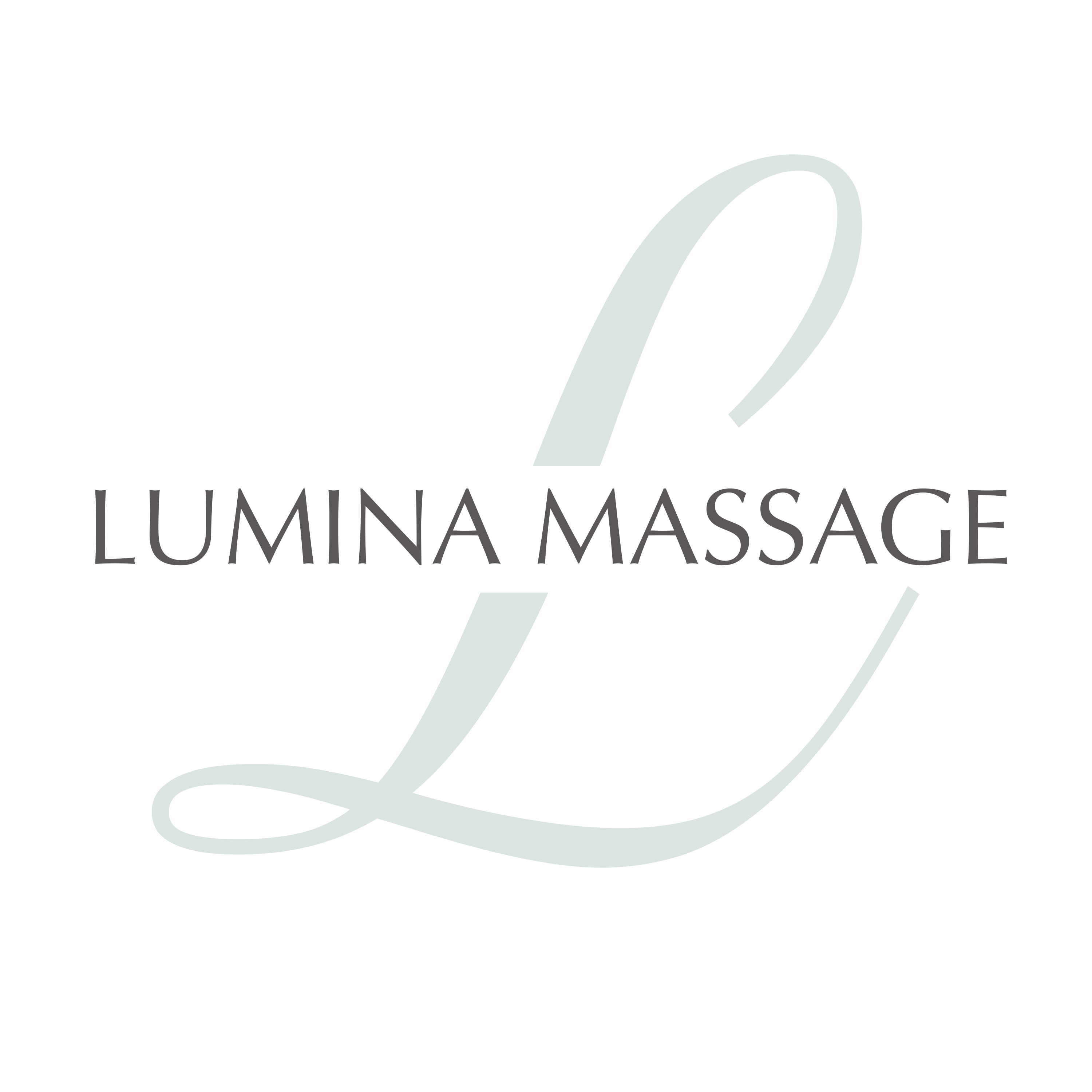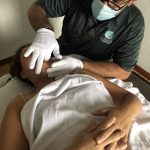Neuromuscular Massage Therapy
Neuromuscular massage therapy is clinical in its approach. Its most common goal is to release the muscle tension that is in an abnormally high state. It may also be used to treat pain from nerve impingement that is caused by muscle tension compressing nerves. It’s rehabilitation for your muscle, ligaments and tendons. It’s implemented when you are under any medical treatment plan where your body is being restored to its natural ability to move without pain. Therapy is rarely fun, pleasing or pleasurable and it often dictates a level of commitment and sacrifice to achieve restoration. You will most likely find this style of massage in a sports medicine clinic or a medical office. Occasionally you may find a private practice where the massage therapist specializes in treating muscular pain. To understand who would be the ideal candidate, you would imagine someone that has been diagnosed with strain, sprain or spasm of a tendon, ligament or muscle. This pain could be increased by high levels of inflammation. There is a specific knowledge coupled with experience of treating pathologies that a trained massage therapist in this particular method that gives them the confidence to treat injuries. A massage therapist that chooses this specialty has a focused training in detecting inflammation, common symptoms associated with other underlying issues and the effects of analgesics and prescription pain killers. They often receive referrals from orthopedic surgeons, rheumatologists, chiropractors and family medical doctors. Additionally, these massage therapists are more familiar with reading prescriptions with guided direction from your physician. Other health care providers that provide massage for rehabilitation include physical therapists and occupational therapists. However, these sessions are commonly limited to shorter sessions called spot treatments. This is normally due to the fact that in one hour the physical and/or occupational therapist must also include stretching and exercises. The hands-on massage time may range from five to thirty minutes. Massage Therapists are usually focused on the manual aspect of treatment and therefore can give more time. Every setting is unique, be certain to ask who will be providing the massage and how long it lasts. One unique facet in receiving treatment with neuromuscular massage is that you should communicate throughout the session. Compared to relaxation massage, this style encourages feedback and guidance during your time. Because an injury is being treated “zoning out” is not recommended. Neuromuscular massage therapy is intense but it is a partnership between massage therapist and client of mutual respect and healthy open communication.
Feeling Frustrated During Recovery
No one likes feeling sick and helpless. Your mind may remember a time when you felt physical and mentally strong. Independence is a glorious goal to work towards. Aging is a hard pill to swallow but if you are nursing an injury and recovering at home, the highlight of your mindset should be : patience. This can be easier said than done but the two keys that I have found in recovering from pain is patience and monitoring.
How to monitor your progress
It may feel frustrating to have to “baby” yourself but hear me out. If you are injured and working through a healing process, this is a temporary journey. When I treat others with neuromuscular massage it has a finishing date. Some case are chronic, such as an autoimmune disease that result in a lifetime of care that may include massage. But for the purposes of this section I want to acknowledge the frustration that you are feeling now. It’s normal to want to be healthy again. When we were younger the majority of us could do increbile feats with our bodies and the recovery time was fast! But even the strongest of athletes must recover. Create a journal of your progress. You can have a small notebook or a digital version. On the top you’ll have the condition you’re recovering from. Lets say it’s plantar fasciitis (an intense pain on the soles of your feet). If you can remember when the pain began and your therapy and your home care jot all of those down. This is no different from creating goals. Describe your symptoms: do you have swelling? what area of the body? Do you have pain when you touch said area? What triggers the pain? (for example: standing for (x) amount of time). What relieves the pain? (for example: resting your feet and keeping them elevated). Each day, make a small journal entry about your condition. If you are in the state of recovery and in therapy , make notes of the small changes you see for the better. When we are “in the thick of it” our recovery time feels as though it goes at a snail’s pace. It is crucial for motivation that you also keep notes about what works and what doesn’t. This record keeping is also ideal if your massage therapist doesn’t keep clinical notes of your progress.
Backsliding
You decide that you’re doing really well and you can return to work or whichever normal activity you have. The next morning you wake up with a new pain in another area of your body and even more pain in the old one. What gives? You may think. Discouragement can easily lead to depression if you don’t take a mental step back and implement patience once more.
Sitting with Your Anger
When you feel physically weak (especially if the recovery time is not instant) you may develop strong emotions such as anger. By best advice is not to dismiss these feelings and learn how to sit with them. Sitting with what is happening in your mind and heart can be scary but it is a part of your physical healing as well. Yes, it is a beautiful thing to think to yourself that “others have it worse” or “I’m meant to learn something from this”. All of these things are good and noble thoughts but don’t use this false guilt to dismiss fear, anger and sadness when you don’t improve fast enough. Being busy and using entertainment to stuff down your emotional state can be just as harmful. Sitting still physically is not equal to stillness in your heart. Make a choice to not use distractions and allow the frustration to wash over you. Draw it, yell it, cry it out. Expression is key and you must allow yourself to do so when you are in a state of recovery. Wallowing is a prolonged version of where you choose to stay in that unhealthy state. If you allow yourself to hold hands with the emotional pain and then release it, you will feel so much better.
Setting Boundaries
Ask yourself: what did I do to make my progress backslide? Where did I push myself too hard? Remember that underlying conditions such as pregnancy, scoliosis or an auto immune disease that produces flare ups can slow down the healing process. Journaling your frustrations is healthy to express your emotions but when all is said and done return to the logical step of record keeping. Make a list of what you have limits in right now and keep them. If you feel unproductive, replace those items with tasks you can do without placing you in a position of compromise. If you ignore your body’s signals and push your boundaries you may end of spending more money on therapy and losing valuable time from work.
side note: pregnancy is not a medical condition but the growing weight of the belly does hinder the recovery time of any injury or pain you’re recovering from.
Conditions of the Feet
Plantar Fasciitis
“My feet are killing me, I can barely stand on them without feeling pain”.The sentence above may be spoken from someone experiencing pain from a condition called Plantar Fasciitis. The tendon and muscles that run along vertically become extremely swollen from over use. People that suffer from this are often on their feet for many hours a day. The extra weight of a pregnant belly may also strain the soles of the feet and cause this. Neuromuscular massage can help by focusing on the sole and lower leg muscles. If the condition is severe pain may refer to the hips and lower back.
This condition is skeletal in nature and normally refers to a lack of arch in the foot. When this occurs, pain in the muscles of the feet are common especially when the person is required to stand for long periods of time. Historically, drafted men were excused from military service that had this condition due to the impending hours of marching included during their service. For those that wish to lead an active lifestyle, having flat feet can be a frustrating impediment. Bones are more easily corrected the younger a person is through braces and physical support systems. As a person ages, their bones become less pliable making a condition like flat feet difficult to correct. However, there are health providers that claim that orthopedic shoe insoles are the best course of action to take in helping to create an arch in the foot. This process takes time and most insoles are often not covered by health insurance leaving the patient to take on the cost.For some, it’s a worthy endeavor. The anatomy of a healthy foot gives you the freedom to move for the rest of your life without pain. Caring for your feet especially as you age is a worthy financial endeavor for most people. If you choose to undertake treatments that create an arch in your foot, the muscles of the foot will need care as the process is often uncomfortable. Therefore massage therapy is an excellent complimentary therapy to orthopedic insoles. It is important to note that because flat feet is a structural condition (meaning the cause is bone related) massage is unable to treat the problem on its own. Massage is meant to release muscular tension, lower inflammation and thus pain but it cannot manipulate bone. An ethical massage practitioner will explain this to their patient. Additionally it is important that the feet are not the only musculature that is treated in the process of treating flat feet. Massage of the legs and even hips would gain the most benefit during your treatment.
Coccydynia
Coccydynia is the medical term for tailbone pain. This area of the body is called the coccyx and is located just underneath the sacrum. Although small, the coccyx has many important muscles attached to it.
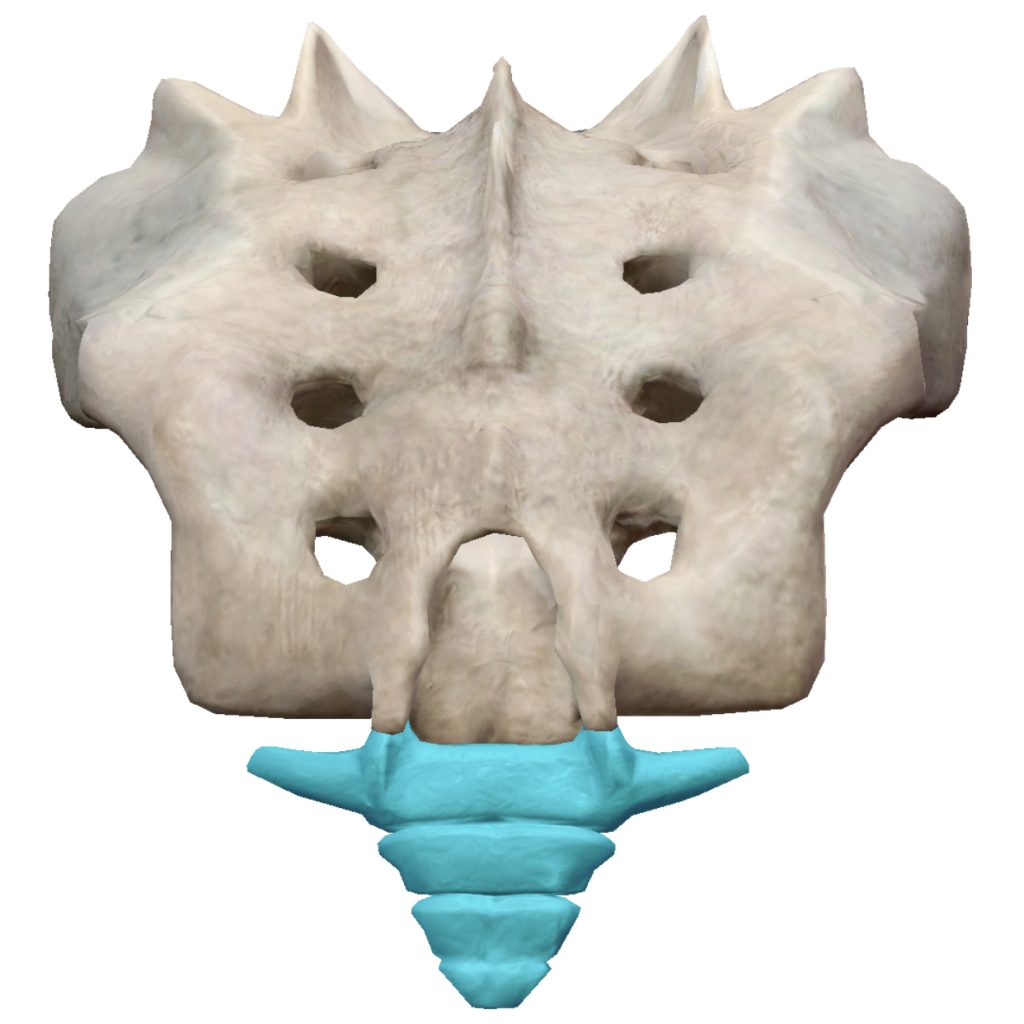
Pain can occur through several causes. The most common being a fracture or a break. This occurs for example when someone lands on their rear end forcefully. When a break or fracture happens, massage is not advised until the bone heals. Another cause may be a strain on the muscles due to pregnancy. The coccyx is located near the pelvic floor muscles. A basin shape of a variety of muscles that feel the weight of a growing baby month after month. Another instance may be a sudden thrust of the pelvic bone, as could happen in a car accident where the body is jolted forward. These are just some example of how the coccyx and the muscle attached can be strained and produce pain.
The coccygeus muscle, the lower portion of gluteus maximus muscle and sacrospinous ligament are the most accessible to access in massage or manual therapy. Located between the gluteal cleft, a therapist is able to access these muscles by locating the tailbone first and then applying massage techniques the attachments of the muscles mentioned above.
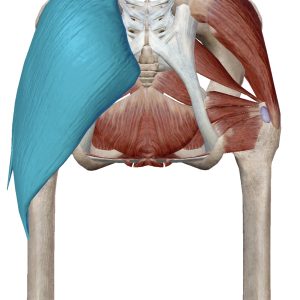
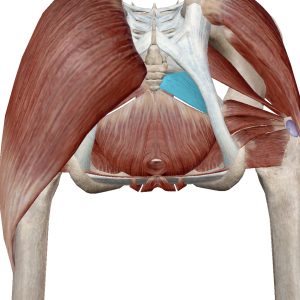
Home care may include a donut shaped cushion where the space in the middle elevates the hips, preventing pressure directly on the tailbone. This device can be used in conjunction with therapy. Placing ice or heat may be applied by sitting on the ice or heat pad. Folding a small and thin ice pack and placing it between the gluteals is also helpful.
Coccydynia that is a result of muscle strain and tension can be treated successfully.

